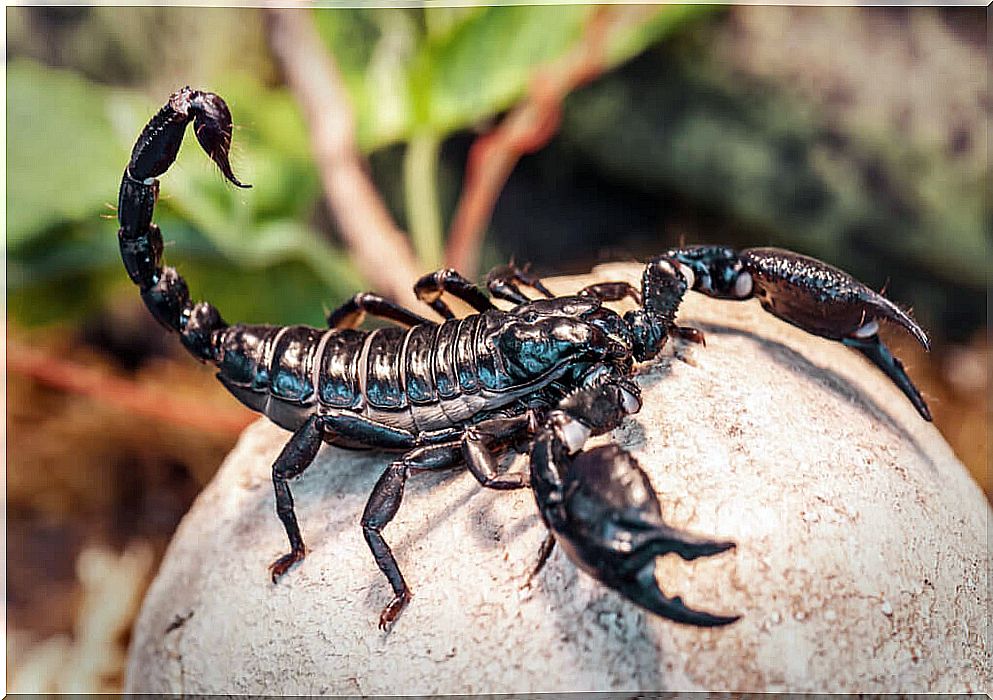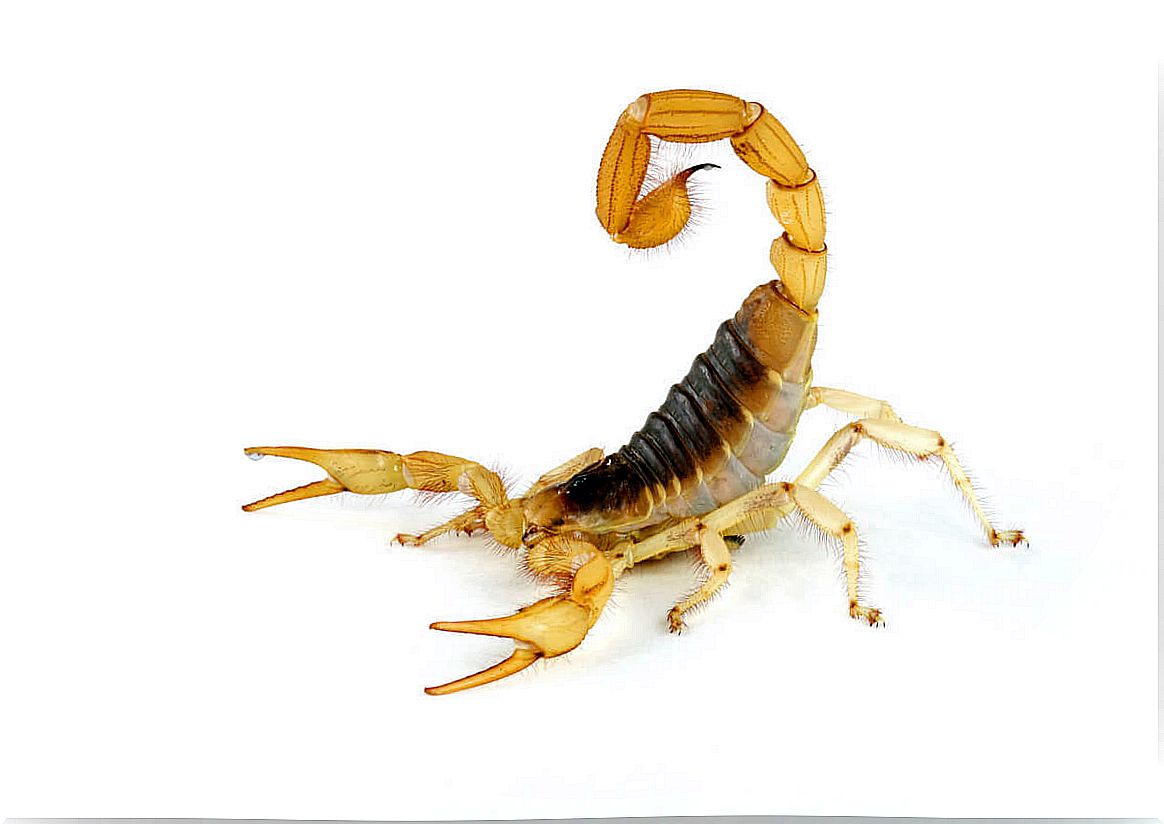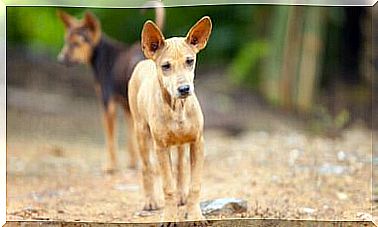What Do Scorpions Eat?

Scorpions, also known as ‘alacraus’ in other parts of the world, are predatory arachnids of the order Scorpiones. All have 8 legs, pedipalps modified with tweezers (clamps) and a tail terminated in a stinger, which produces more or less potent toxins. In addition to general information, knowing what scorpions eat helps in their preservation and prevents scares in human environments.
These arachnids have a nasty, downtrodden reputation, as fewer than 50 species of the 2500 described so far have enough lethal venom to take a human’s life. If you want to learn more about the eating habits of scorpions, read on.
General information about scorpions
First of all, we want to emphasize that we will use the term ‘scorpion’ to designate all arachnids of the order Scorpiones , which comprises about 2500 species divided into 22 recognized families. The evolution of this group dates back to 435 million years and, throughout that time, the species have spread around the world, with the exception of Antarctica.
In technical terms, it should be noted that the genus Alacran includes only 3 species, in turn included in the family Typhlochactidae. They are endemic to Mexico and are found in the central area of the Sierra Madre Oriental (states of Puebla and Oaxaca). For this reason, throughout Central and South America, the terms ‘scorpio’ and ‘alacrau’ are used interchangeably.
In any case, scorpions or alacraus have a body divided into 3 segments: cephalothorax (head), mesosome (abdomen) and metasome (tail). All have a carapace, eyes, chelicerae, chelated pedipalps, 4 pairs of legs and a tail that ends in a stinger. As can be seen, its morphological diversity is very limited.

What do scorpions eat?
All scorpions are carnivores, meaning they feed on organic matter supplied by their prey. Most of them feed on grasshoppers, crickets, termites, beetles and wasps. However, some species are also prepared to kill small vertebrates, such as rodents, amphibians or lizards.
Like many other arachnids, scorpions digest food externally. With the help of their chelicerae, they break down the food into small parts, which are stored in the oral cavity, between the chelicerae area and the carapace. Gastric juices are secreted in this chamber so that the scorpion can ingest its food in fluid form.
How do scorpions hunt?
At this point, it is important to highlight that these arthropods are ectothermic. This means that they do not generate body heat with their metabolic reactions and therefore depend on the environment for thermoregulation. As several studies indicate, the cells of ectotherms have fewer mitochondria – the energy-generating organelles par excellence – than those of endotherms.
For all these reasons, scorpions or alacraus have much lower metabolic rates than a mouse or bird, for example. Their hunting strategy is of the sit and wait type , that is, they wait for an insect to pass through their hiding place and grasp it deftly with the tweezers, and then inoculate the poison. You’ll never see a scorpion chasing its prey, as it literally doesn’t generate enough energy for this contest.
Depending on the scorpion species, a specimen can kill smaller prey with just the force of its pincers. If the victim resists or poses a threat, the scorpion resorts to the venom sting. The production of toxins is very energy demanding, so the sting only occurs when it is strictly necessary.
Based on this same rule, scorpions with larger claws are believed to have a lighter venom. On the other hand, the greater the tail prominence and the smaller the cleats, the more lethal the toxins.
Captive Care for Scorpions
Great care must be taken when purchasing scorpions as pets as some species are lethal and therefore unauthorized possession is illegal. Keeping a potentially dangerous animal (PP) in a domestic environment without adequate facilities is considered a crime.
The most commercialized scorpions are those of the genus Heterometrus , large, black and with very prominent pincers. They do not pose a danger to humans, therefore, no special permits are required for their possession. These animals have a venom of negligible clinical relevance and rarely use the stinger.
To keep a specimen of this genus, a terrarium measuring 30x20x20 centimeters in length, width and height is enough. Universal substrate or coir fiber is perfect for installation as a floor and a minimum of 5 fingers of substrate must always be placed. Scorpions like to burrow and hide for most of the day.
With regard to environmental parameters, it is best to keep the temperature between 20 and 30 degrees and the relative humidity at 80%. To do this, just spray the installation with water about 2 or 3 times a week. Also, giving an adult specimen one medium-sized live prey per week – a cricket or a cockroach – is usually sufficient. Scorpions don’t eat much.

Finally, it should be noted that dangerous species are also sold without authorization in many regions. Be especially careful with scorpions of the genus Tityus and Androctonus, as they have clinically significant venoms. Before buying any animal species, make sure the seller is professional and its characteristics.









